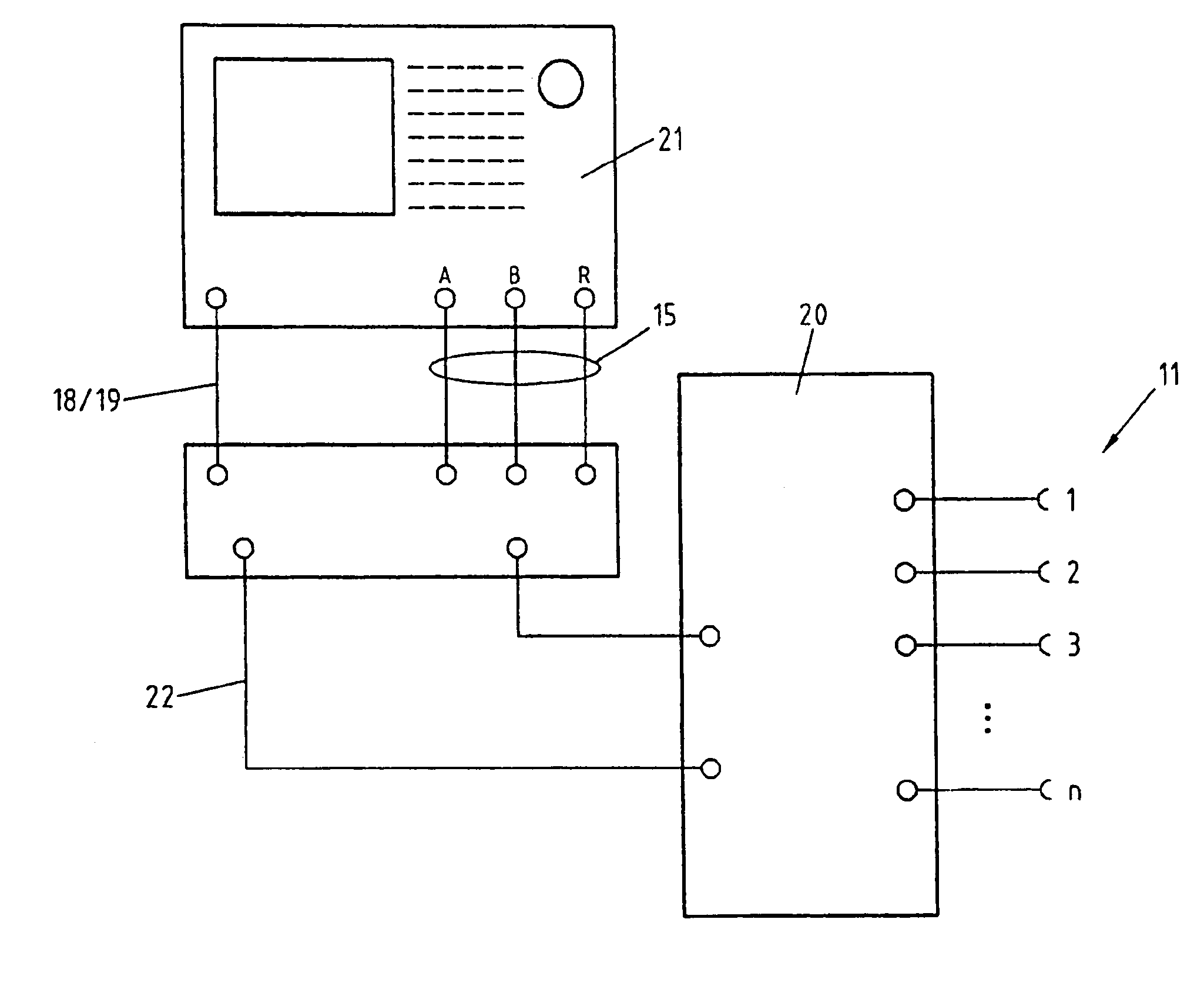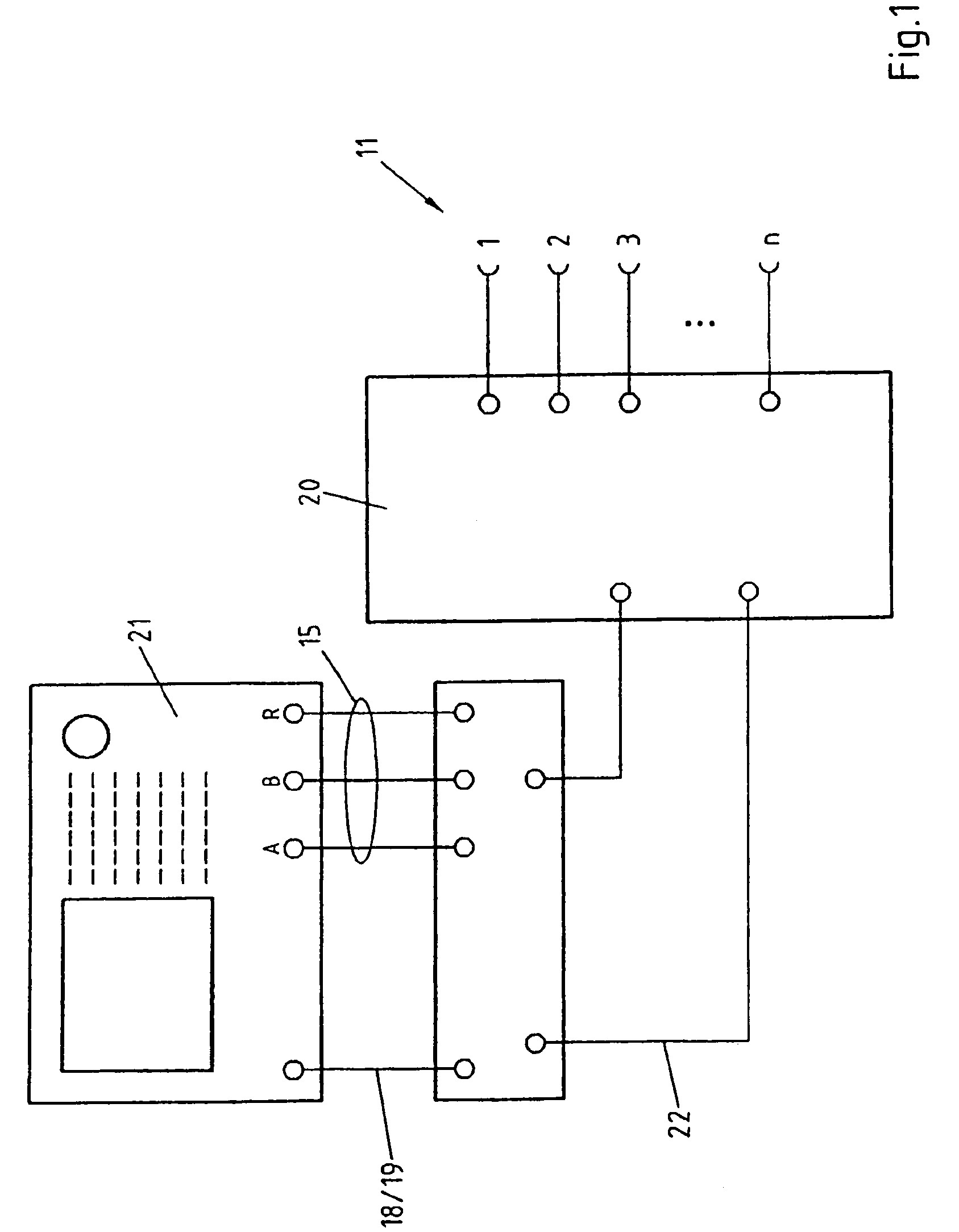Method for correcting errors by de-embedding dispersion parameters network analyst and switching module
a technology of dispersion parameters and network analysts, applied in the direction of electronic circuit testing, measurement devices, instruments, etc., can solve the problems of time-consuming and complex calibration, error interferences throughout the network analyzer itself, and falsification of measurement results, etc., to achieve less loss of time, less expensive, and rapid conversion of multi-port solutions
- Summary
- Abstract
- Description
- Claims
- Application Information
AI Technical Summary
Benefits of technology
Problems solved by technology
Method used
Image
Examples
Embodiment Construction
[0072]First, embodiment examples of a network analyzer is described with the aid of FIGS. 1–5, which show an arrangement wherein the invented de-embedding procedure may be applied.
[0073]FIG. 1 presents a network analyzer with three measurement positions 15, two inner ports 22 and n outer ports 11. A service and operating unit 21 is connected to two inner ports 22 of the network analyzer by three measurement positions, namely A, B and R as well as by high frequency lines 18, 19. The two inner ports 22 are, on their own part, connected through a switching module 20 with n outer ports 11. Two of the measurement positions A and B capture back-running signals from the outer ports 11 and one of the measurement positions, i.e., R, picks up the signals directed to the outer ports 11. The high frequency supply lines 18, 19 are used to conduct incoming signals to the outer ports 11, whereby also a (not shown) reflectometer also guides the respective signal to the measurement position R for th...
PUM
 Login to View More
Login to View More Abstract
Description
Claims
Application Information
 Login to View More
Login to View More - R&D
- Intellectual Property
- Life Sciences
- Materials
- Tech Scout
- Unparalleled Data Quality
- Higher Quality Content
- 60% Fewer Hallucinations
Browse by: Latest US Patents, China's latest patents, Technical Efficacy Thesaurus, Application Domain, Technology Topic, Popular Technical Reports.
© 2025 PatSnap. All rights reserved.Legal|Privacy policy|Modern Slavery Act Transparency Statement|Sitemap|About US| Contact US: help@patsnap.com



